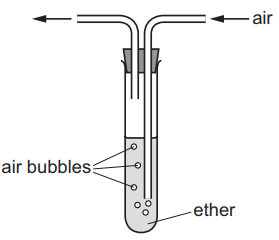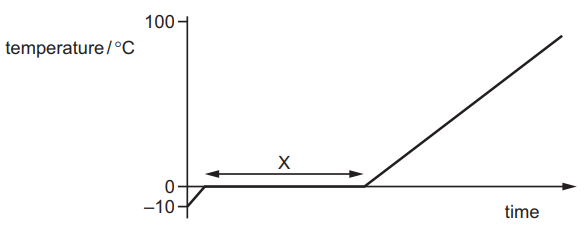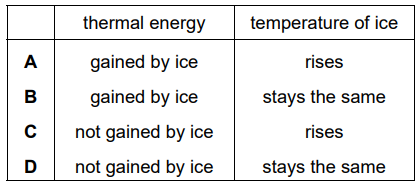Question
Ether is a liquid that evaporates easily at room temperature.
The rate at which ether evaporates can be increased by bubbling air through it.
The diagram shows this process.

Students give three suggestions why the rate of evaporation increases when air is bubbled through.
Student 1 suggests that the temperature of the ether is decreased.
Student 2 suggests that the surface area of the ether is increased.
Student 3 suggests that evaporated molecules are removed at a greater rate.
Which students are correct?
A 1 and 2 B 1 and 3 C 2 and 3 D 3 only
Answer/Explanation
Ans:
C
Question
Ether is a liquid that evaporates easily at room temperature.
The rate at which ether evaporates can be increased by bubbling air through it.
The diagram shows this process.

Students give three suggestions why the rate of evaporation increases when air is bubbled through.
Student 1 suggests that the temperature of the ether is decreased.
Student 2 suggests that the surface area of the ether is increased.
Student 3 suggests that evaporated molecules are removed at a greater rate.
Which students are correct?
A 1 and 2 B 1 and 3 C 2 and 3 D 3 only
Answer/Explanation
Ans:
C
Question
A bubble of gas is formed deep under water. The bubble has a volume of $40 \mathrm{~cm}^3$ and the pressure inside the bubble is $P$.
The bubble rises up through the water. The volume of the bubble increases to $56 \mathrm{~cm}^3$ and the pressure becomes $100 \mathrm{kPa}$. The temperature of the gas does not change.
What is the initial pressure $P$ ?
A $71 \mathrm{~Pa}$
B $71 \mathrm{kPa}$
C $140 \mathrm{~Pa}$
D $140 \mathrm{kPa}$
Answer/Explanation
Ans:D
Question
Some ice is slowly heated and its temperature is measured. A graph is plotted of temperature against time.

Which row describes what happens to the thermal energy and to the temperature in section X?

Answer/Explanation
Ans:
B
Question
Which statement describes a sensitive liquid-in-glass thermometer?
a thermometer which can be used to measure very high and very low values of temperature
a thermometer which gives the same increase in length of the liquid column for each degree of temperature rise
a thermometer which is accurate because it has been calibrated
a thermometer which gives a large increase in the length of the liquid column for each degree of temperature rise
Answer/Explanation
Ans: D
